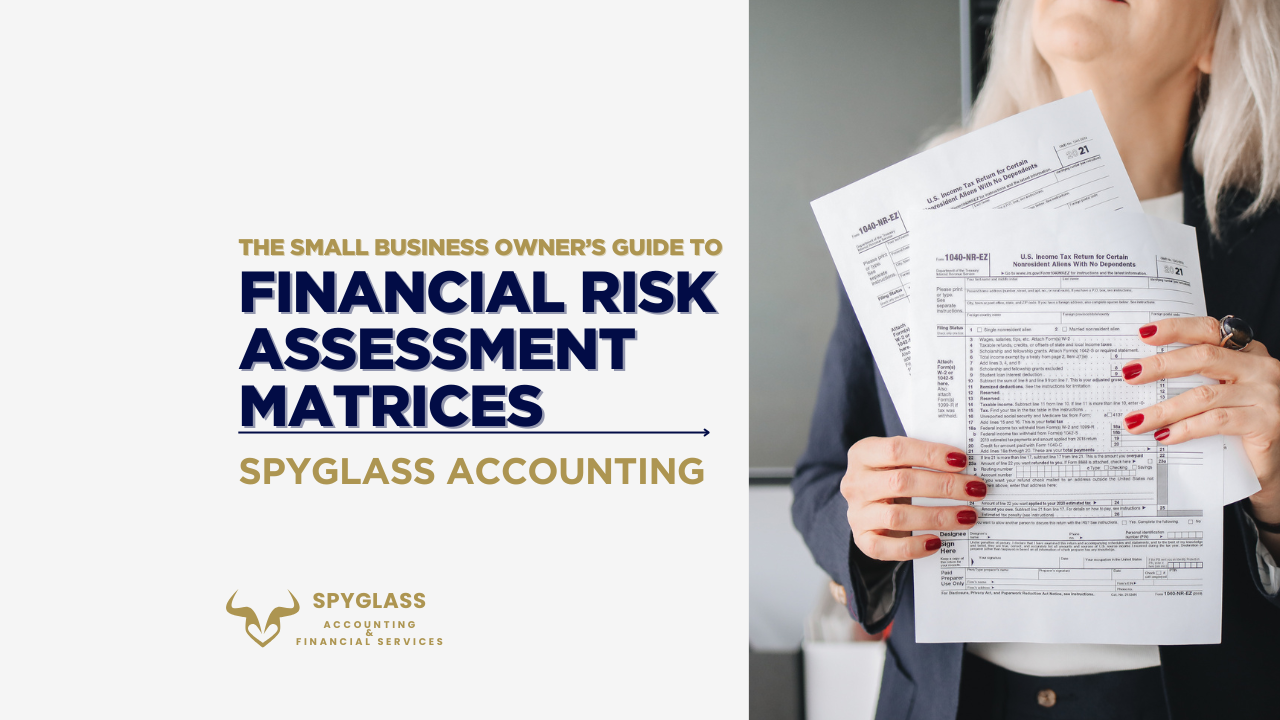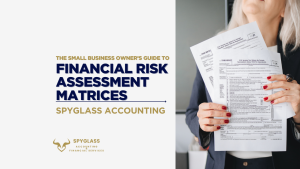
The Small Business Owner’s Guide to Financial Risk Assessment Matrices
Introduction: Why Risk Management is Non-Negotiable for Small Businesses
Did you know that 60% of small businesses fail within their first five years, often due to unmanaged financial risk assessment? From cash flow shortages to fraud and regulatory fines, financial threats can derail even the most promising ventures.
The solution? A financial risk assessment matrix—a strategic tool that helps you:
✅ Identify potential financial threats before they strike
✅ Prioritize risks based on severity and likelihood
✅ Mitigate losses with data-driven action plans

In this 3,000+ word guide, we’ll break down:
- What a risk assessment matrix is (and why it’s critical for small businesses)
- Step-by-step instructions to build your own matrix
- Real-world examples of financial risks and mitigation strategies
- Free downloadable template to get started immediately
What Is a Financial Risk Assessment Matrix?
A financial risk assessment matrix is a visual tool that evaluates risks based on two factors:
- Likelihood (How probable is the risk?)
- Impact (How severe are the consequences?)
By plotting risks on a grid, businesses can quickly see which threats demand immediate attention.
Example Risk Matrix
| Impact/Likelihood | Low (1) | Medium (2) | High (3) |
| Catastrophic (4) | Moderate | High | Extreme |
| Major (3) | Low | Moderate | High |
| Minor (2) | Minimal | Low | Moderate |
(Key: Red = Extreme risk, Yellow = Medium risk, Green = Low risk)
5 Types of Financial Risks Small Businesses Face
- Cash Flow Risks
- Example: A client delays payment, leaving you unable to cover payroll.
- Mitigation: Maintain a 3–6 month cash reserve; invoice factoring.
- Fraud & Embezzlement
- Example: An employee skims funds from petty cash.
- Mitigation: Segregate accounting duties; regular audits.
- Regulatory Compliance Risks
- Example: IRS penalties for late tax filings.
- Mitigation: Work with a CPA; use compliance software.
- Market Volatility
- Example: A recession reduces customer spending.
- Mitigation: Diversify revenue streams; hedge investments.
- Cybersecurity Threats
- Example: A data breach exposes customer credit card info.
- Mitigation: Multi-factor authentication; cyber insurance.
How to Create a Financial Risk Assessment Matrix in 6 Steps
Step 1: Identify Risks
Brainstorm potential financial threats using:
- Historical data (past losses, fraud incidents)
- Industry benchmarks (common risks for your sector)
- Stakeholder interviews (ask employees, accountants, and advisors)
Pro Tip: Use our free risk identification checklist to ensure you don’t miss critical risks.
Step 2: Rate Likelihood
Assign a probability score (1–5):
- Very Unlikely (<10% chance)
- Unlikely (10–30%)
- Possible (30–50%)
- Likely (50–80%)
- Almost Certain (>80%)
Example: “Late client payments” might rank 4 (Likely) for a consulting firm.
Step 3: Rate Impact
Score potential consequences (1–5):
- Negligible (<$1K loss)
- Minor ($1K–$10K)
- Moderate ($10K–$50K)
- Major ($50K–$100K)
- Catastrophic (>$100K or business closure)
Example: A data breach could be 5 (Catastrophic) for an e-commerce store.
Step 4: Plot Risks on the Matrix
| Risk | Likelihood | Impact | Risk Score (L x I) |
| Client non-payment | 4 | 3 | 12 (High) |
| Employee fraud | 2 | 4 | 8 (Medium) |
| IRS audit penalties | 3 | 5 | 15 (Extreme) |
Step 5: Prioritize & Mitigate
- Extreme Risks (15–25): Immediate action required (e.g., hire a tax attorney for audit risks)
- High Risks (8–12): Address within 30 days (e.g., implement invoice reminders)
- Low Risks (1–6): Monitor periodically
Step 6: Monitor & Update
Review the matrix quarterly or after major changes (e.g., new regulations, market shifts).
Real-World Example: Retail Business Risk Matrix
Scenario: A boutique clothing store with $500K annual revenue.
| Risk | Likelihood | Impact | Action Plan |
| Inventory theft | 4 | 3 | Install CCTV; RFID tags |
| Seasonal sales slump | 5 | 4 | Diversify product lines |
| Supplier price hikes | 3 | 3 | Negotiate bulk discounts |
3 Common Mistakes to Avoid
- Underestimating Low-Probability Risks
- Example: Ignoring cybersecurity because “it won’t happen to us.”
- Fix: Even rare risks can be devastating—plan for them.
- Over-Reliance on Gut Feelings
- Example: “Our cash flow is fine” without data.
- Fix: Use historical financials to assess risks objectively.
- Failing to Document Mitigation Plans
- Example: Identifying fraud risks but not assigning accountability.
- Fix: Use a risk response template to track actions.
When to Seek Professional Help
While small businesses can manage basic risk assessments, complex scenarios may require expert guidance. Spyglass Accounting & Financial Services helps clients:
✔ Quantify risks with scenario analysis
✔ Implement controls (e.g., fraud detection systems)
✔ Align risk strategy with business goals
📞 Schedule a free risk consultation today!
Key Takeaways
- A risk matrix visualizes financial threats by likelihood and impact.
- Prioritize extreme risks (e.g., IRS audits, fraud) over minor ones.
- Update your matrix quarterly to reflect changing conditions.
- Automate tracking with accounting software (e.g., QuickBooks + risk modules).
By proactively managing risks, you’re not just avoiding disasters—you’re building a resilient, future-proof business.